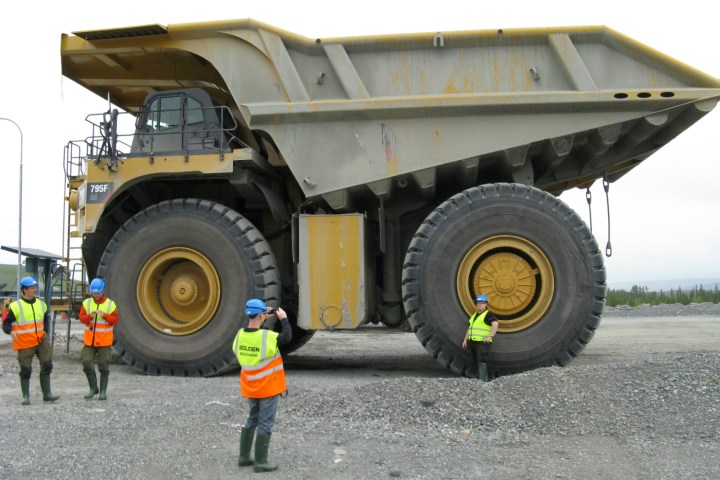
Even with the most alert driver, incidents are scaled up along with vehicle size. These trucks can roll right over a normal sized passenger vehicle and flatten it, and operators would feel like they hit a small bump. In the past, these trucks have rolled down embankments that were not perceived from the height of the cab, killing the occupants. These rolling behemoths also pose a constant risk to the lives of others on the site, even from the slightest mistake. Absolute concentration and situational awareness is vital for the operators.
Mines operate around the clock, so they have employees who work long shifts through the night, running the risk of nodding off at the wheel. Operator fatigue is a potentially fatal problem, and Caterpillar recognized this and is working on a solution. Caterpillar Safety Services joined forces with tech company Seeing Machines to create and install fatigue detection software into thousands of mine trucks across the world, according to The Huffington Post.
The technology monitors head position and eye closure as signs of fatigue via a camera integrated with a speaker and light system. Rather than identifying a particular individual, facial recognition software looks for predetermined signs of exhaustion. If detected, an alarm goes off inside the truck, and a video clip of the driver is immediately sent to Caterpillar headquarters’ sleep fatigue center. A safety adviser then contacts the operator over radio and notifies the site supervisor. A sleep intervention may be recommended, requiring the driver to take a nap.
Caterpillar is at the early stages of implementation for this solution, and hopes to expand it further into its 38,000 trucks deployed across the globe.
Editors' Recommendations
- Facial recognition tech for bears aims to keep humans safe
- Federal bill would ban corporate facial recognition without consent
- Facebook ordered to pay $650 million in facial recognition lawsuit
- ACLU files complaint against Detroit police for false facial recognition arrest
- Microsoft won’t sell facial recognition technology to police


